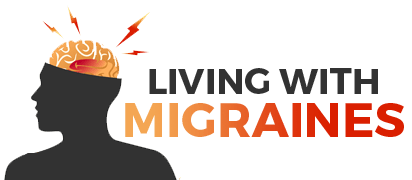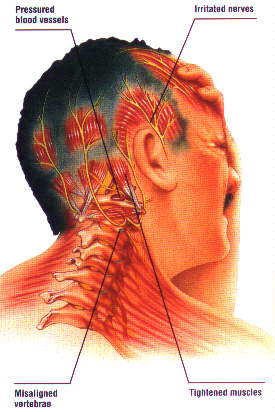
A migraine is a vascular headache that involves pain on one side of your head in addition to nausea and sensitivity to light and sound. However, there are other types of headaches that are quite common and can easily be treated without the use of medication. Most of us have experienced tension headaches – a type of headache induced by the tightening of muscles in the face, shoulder, and upper back area. These types of tension headaches are quite common. I would like to discuss the causes behind the tension headache and describe methods that can be used to relieve muscle tension and remove the pains associated with the headaches.
What is behind a tension headache?
Tension headaches are the most common and are brought on by stress, fatigue, poor posture, and hunger. It might look easy to cure tension headaches by simply removing stress, standing upright, getting a good night’s sleep, and eating well. However, it is not quite that simple. First of all,
There are four main reasons for getting a tension headache
1. Stress
How do you know if you are stressed? You have to pay attention to the signs of stress. The following can be good indications:
- Trouble sleeping
- Stomach pains
- Frequent headaches
- Anxiety
- Fatigue
- Inability to concentrate
In addition, you could have problems at work or problems at home. Make an appointment for yourself, by yourself, and find a calm place to go a Saturday or Sunday morning. Bring a notebook and sit down and write the first things that come to mind that could be contributing to stress. As with migraine headaches, you have to find the underlying causes to be able to cure or relieve tension headaches. Tension headaches could ve manifestations of underlying problems in our bodies.
2. Fatigue
When you are fatigued, you feel tired, exhausted, and generally lack energy. Fatigue can be a direct result of stress. When you are about to get a cold or flu, you feel horribly tired. A tension headache frequently accompanies the start of the cold or flu. Once the sickness disappears, your energy returns.
3. Posture
Posture is a big problem for most people. To make matters worse, many professions now use computers on a daily basis and there is a direct correlation between the number of hours spent behind a computer and your posture. The same thing can be said for professions where a substantial amount of driving is involved. If your body is hunched over in a static stance for a longer period of time, your muscles tighten in your upper back and neck area and restrict blood flow to the back of your head. This is when the headache occurs. The headache is telling you that you need to correct your posture. By sitting upright at your desk and walking around your office every 30 to 45 minutes, you allow your muscles to relax and make sure that blood continues to flow uninterrupted to the back of your head.
4. Hunger
You need to eat healthy and eat often. More importantly, you need to take the time and effort to have a good meal. Tension headaches that result from hunger are indications that the body is either not satisfied with the food currently in your stomach or the frequency with which you consume food. Simple sugars (carbohydrates), like: corn syrup, refined sugar, honey, fructose, etc. cause headaches by increasing your blood sugar level substantially. When the blood sugar level then comes down, your body reacts with a headache. Consume only fruit to get your daily dose of simple sugars. Add more complex carbohydrates to your diet, since complex carbohydrates raise your blood sugar level more slowly.
Your work will still be there when you come back from lunch. Take a full hour to enjoy a light but healthy lunch filled with protein. Make sure that you have plenty of healthy snacks in case you become hungry in between meals. Furthermore, cut your daily intake of caffeine. People who drink large amounts of coffee are generally not as hungry and often develop headaches. In order to avoid these types of headaches, make sure you eat healthy and often.
Conclusion
In order to remove the likelihood of getting tension headaches, you need to remove the causes behind the headaches. As mentioned above, most tension headaches are stress related, but some are also brought on by your diet, sleep patterns, and posture. If you find yourself with tension headaches, explore each of the four areas covered above. Do not forget to exercise regularly as well.

